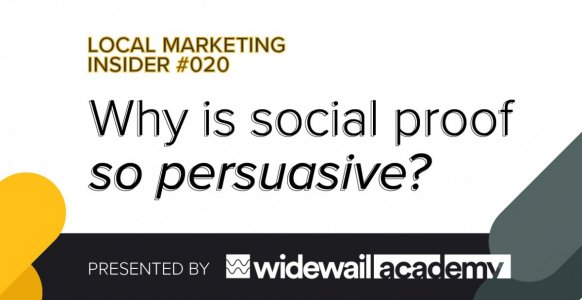- Feb 17, 2021
- 96
- 75
- Awards
- 4
- First Name
- Jake

Welcome to part #3 of the LMI newsletter series on trust. In the first two issues of the series we covered “What is trust in the digital age?” and “What is distributed trust?” Catch up here. Due to the holiday, part #4 (“The Brand Mosaic”) will be released Tuesday 11/23, 7 am est. The Brand Mosaic is a model for how to think about your customer's journey from consideration to purchase in the trust economy.
In today’s information-heavy environment, buyers need easy and reliable ways to make quality decisions efficiently. Social proof is that shortcut.
How should we define social proof? I found a couple of explanations:
- The tendency to copy the behavior and actions of other people in situations of ambiguity or uncertainty.
- A psychological phenomenon where people reference the behavior of others to guide their own behavior.
Put simply, people respond to people.
3 reasons social proof is so persuasive
“Giving people evidence that other shoppers have already had a positive experience with a brand, product, or service is extremely persuasive.” Decoding Decisions, Google
Relevant. Reviews and testimonials have a high level of relevance to the prospect’s needs. Although not personalized specifically to the prospect, usually with enough reviews the prospect can identify the pieces of information they require to move forward.
Time-saving. When making a purchase for the first time we have to cross a “trust gap,” from known into the unknown. How we gain the confidence needed to cross the gap usually takes the form of research. Positive customer recommendations reduce the research needed to make a sound decision.
Non-biased. As I discussed in LMI #019 on distributed trust, consumers now trust their peers more than companies to help them make purchase decisions. This is in part due to the customer’s independence, as the reviewer has nothing financial to gain from the prospect reading their review. Independence adds a fundamental assumption of credibility, but more importantly, the recommendation becomes more persuasive.
Customer reviews, comments, and videos are the gold standard of social proof, but broader claims like “the local favorite” or “the popular choice” can have a positive impact. For example, you’ve likely seen a McDonald’s sign reading “over 100 million hamburgers sold.”
Fun examples of social proof
Social proof is all around us whether we are consciously aware or not. Some fun examples:
Bartenders “salt” the tip jar at the beginning of the night with some bills from the night before. This shows the expected behavior to new patrons.
Laugh tracks on TV shows identify the correct moments to laugh. They are proven to enhance positive recall and are particularly effective for less-funny content.
Fundraising events constantly display a list of all the individuals that have donated to show the correct behavior.
Spin classes display the power output of all class participants to motivate better performance.
Political campaigns talk consistently about how many grassroots donors they have amassed.
Long lines are often maintained outside a club even if the club is relatively empty inside. Influence
Technology accelerates the impact of social proof
The term social proof can also be understood as “digital word-of-mouth” in this context. The way in which we build trust through in-person word-of-mouth is tried and true, largely unchanged throughout history (I covered how people determine trustworthiness in #018, but to paraphrase: competence, reliability, kindness, integrity).
With the introduction of digital social proof in the form of networks, platforms, and communities, how prospects assess a business with social proof has accelerated due to technology.
What may have been one or two conversations before digital social proof is now a collection of hundreds of opinions in one place. The influence of, let’s say 1000 customer reviews is substantial because, as mentioned above, customer reviews are assumed to be unbiased and the average score works to limit the impact of outlier situations.
In 2021 consumers have waning trust in companies and a growing amount of peer review information to reference. Prospects look to make an assessment of your business by referring to statements made by your customers.
It’s almost as if you're marketing to your prospective customers through the words of your customers. The distribution vehicle for trust in your business is not entirely your company’s messaging, but rather a combination of your messaging and your customer’s comments.
Paid media spend garners a lot of the hype, but in today’s world of distributed trust social proof already has your prospect’s attention. The job of the business owner or marketer is to get high-quality social proof in front of the prospect at the right time.
Thanks for reading this week's Insider on social proof. Keep an eye out for issue #021 where we will introduce a new concept, the "Brand Mosaic".
If you enjoyed this issue please subscribe.
See you in 2 weeks - Jake, Marketing @Widewail






